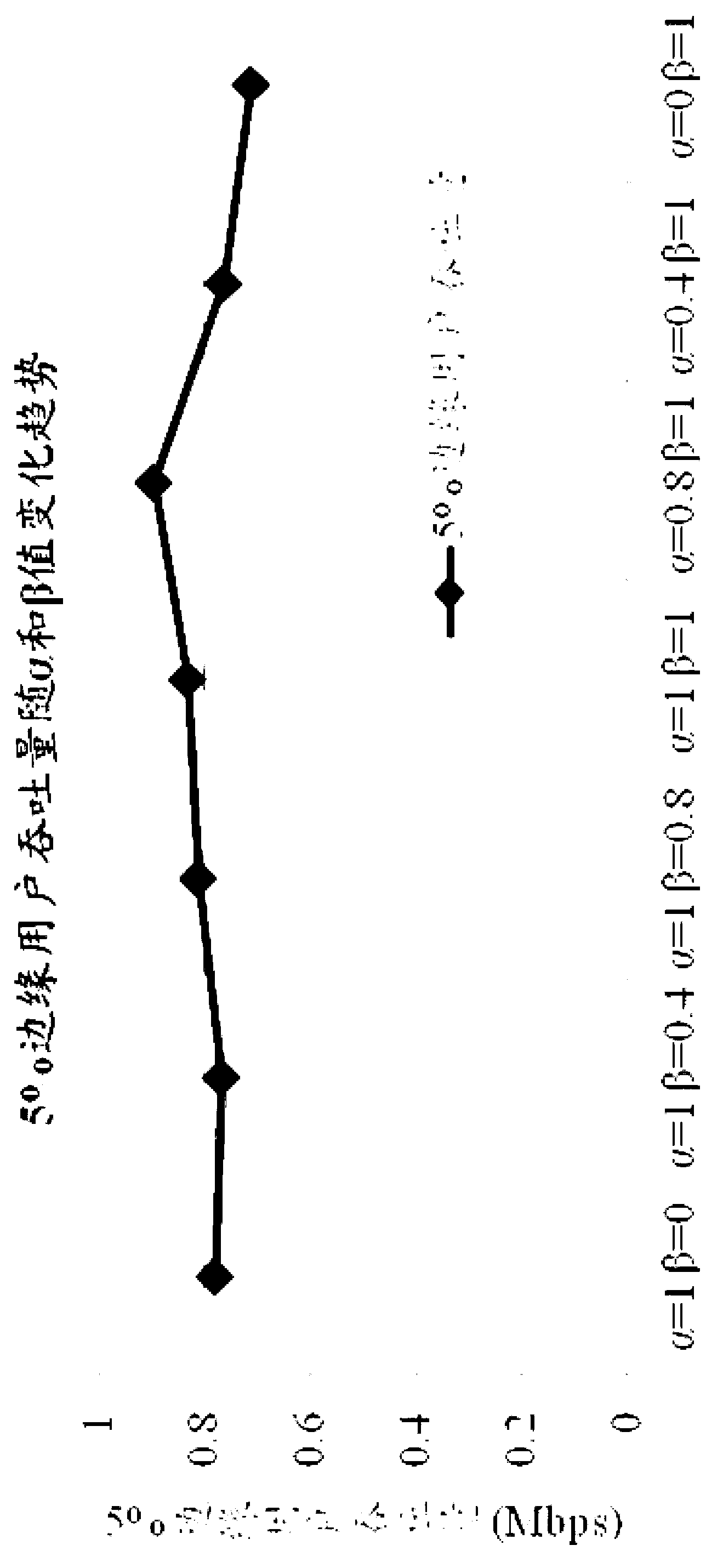Multi-user paring algorithm applied to VMIMO system
A multi-user, user technology, applied in transmission systems, diversity/multi-antenna systems, space transmit diversity and other directions, can solve problems such as low throughput of edge users
- Summary
- Abstract
- Description
- Claims
- Application Information
AI Technical Summary
Problems solved by technology
Method used
Image
Examples
specific Embodiment 1
[0091] When the number of paired users is n=3, the pairing process is as follows:
[0092] Step 0: Set k 1 (x) represents user x itself, k 2 (x) represents the first paired user of user x, k 3 (x) represents the second paired user of user x, ..., k n+1 (x) represents the nth paired user of user x, i∈Ω, Ω represents the set of users who have not allocated resource blocks when the VMIMO system transmits data uplink, Λ 1 is the set of users who have allocated resource blocks when the VMIMO system transmits data uplink, Ω and Λ 1 The collection of is the entire user collection.
[0093] Step 1: Calculate the channel capacity value D of user x according to formula (32) 1 (x)
[0094] D 1 ( x ) = M x + Σ m = 1 M x ...
specific Embodiment 2
[0116] When the number of paired users is n=4, the pairing process is as follows:
[0117] On the basis of Embodiment 1, the step 4 becomes: according to the channel capacity value D when user x transmits data uplink in the VMIMO system in step 3 3 (x) Select the third paired user for each scheduled user in descending order, x∈Λ 3 , Λ 3 Represents the set of users who have found the third pairing, calculated according to the formulas (42), (43), (44), and (45) respectively k 4 (x), D 4 (x) if D 4 (x)>D 3 (x), select k 4 (x) is the third paired user of user x, and k 4 (x) Remove from the unallocated resource block set Ω; otherwise, user x will no longer perform pairing, and user x sends data to the base station in the form of VMIMO through 3 paired users; select the third paired user for each user x in turn , if user x has traversed the set Λ 3 , then go to step 5; otherwise, proceed to step 4 for the next scheduled user x;
[0118] Step 5: According to the chann...
specific Embodiment 3
[0124] When the number of paired users is n=5, the pairing process is as follows:
[0125] On the basis of Embodiment 2, step 5 is modified to: according to the channel capacity value D when user x transmits data uplink in the VMIMO system in step 4 4 (x) Select the fourth paired user for each scheduled user in descending order, x∈Λ 4 , Λ 4 Represents the set of users who have found the fourth pairing, calculated according to the formulas (46), (47), (48), and (49) respectively k 5 (x), D 5 (x) if D 5 (x)>D 4 (x), select k 5 (x) is the fourth paired user of user x, and k 5 (x) Remove from the unallocated resource block set Ω; otherwise, user x will no longer perform pairing, and user x sends data to the base station through 4 paired users in the form of VMIMO; when selecting the fourth paired user for user x in turn, If user x has traversed the set Λ 4 , then execute step 6; otherwise, proceed to step 5 for the next scheduled user x;
[0126] Step 6: According t...
PUM
 Login to View More
Login to View More Abstract
Description
Claims
Application Information
 Login to View More
Login to View More - R&D
- Intellectual Property
- Life Sciences
- Materials
- Tech Scout
- Unparalleled Data Quality
- Higher Quality Content
- 60% Fewer Hallucinations
Browse by: Latest US Patents, China's latest patents, Technical Efficacy Thesaurus, Application Domain, Technology Topic, Popular Technical Reports.
© 2025 PatSnap. All rights reserved.Legal|Privacy policy|Modern Slavery Act Transparency Statement|Sitemap|About US| Contact US: help@patsnap.com



